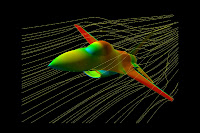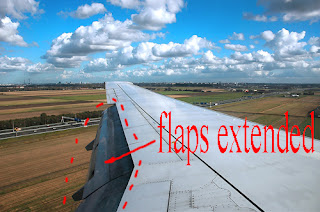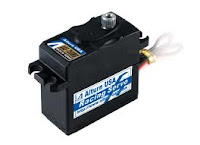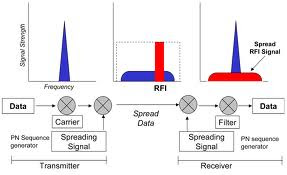Friday, August 30, 2013
Flutter: A phenomenon whereby the elevator or aileron control surface begins to oscillate violently in flight. This can sometimes cause the surface to break away from the aircraft and cause a crash. There are many reasons for this, but the most common are excessive hinge gap or excessive "slop" in the pushrod connections and control horns. If you ever hear a low-pitched buzzing sound, reduce throttle and land immediately.
Posted on Friday, August 30, 2013 by Rc Pilot
Friday, August 23, 2013
Thursday, August 8, 2013
Wednesday, August 7, 2013
Posted on Wednesday, August 07, 2013 by Rc Pilot
Tuesday, August 6, 2013
Epoxy : A two-part resin/hardener glue that is extremely strong. It is generally available in 6 and 30-minute formulas. Used for critical points in the aircraft where high strength is necessary.
Wikipedia Epoxy:
Epoxy is both the basic component and the cured end product of epoxy resins, as well as a colloquial name for the epoxide functional group. Epoxy resins, also known as polyepoxides are a class of reactive prepolymers and polymers which contain epoxide groups. Epoxy resins may be reacted (cross-linked) either with themselves through catalytic homopolymerisation, or with a wide range of co-reactants including polyfunctional amines, acids (and acid anhydrides), phenols, alcohols, and thiols. These co-reactants are often referred to as hardeners or curatives, and the cross-linking reaction is commonly referred to as curing. Reaction of polyepoxides with themselves or with polyfunctional hardeners forms a thermosetting polymer, often with strong mechanical properties as well as high temperature and chemical resistance. Epoxy has a wide range of applications, including metal coatings, use in electronics / electrical components, high tension electrical insulators, fiber-reinforced plastic materials, and structural adhesives. Epoxy resin is employed to bind gutta percha in some root canal procedures.
Wikipedia Epoxy:
Epoxy is both the basic component and the cured end product of epoxy resins, as well as a colloquial name for the epoxide functional group. Epoxy resins, also known as polyepoxides are a class of reactive prepolymers and polymers which contain epoxide groups. Epoxy resins may be reacted (cross-linked) either with themselves through catalytic homopolymerisation, or with a wide range of co-reactants including polyfunctional amines, acids (and acid anhydrides), phenols, alcohols, and thiols. These co-reactants are often referred to as hardeners or curatives, and the cross-linking reaction is commonly referred to as curing. Reaction of polyepoxides with themselves or with polyfunctional hardeners forms a thermosetting polymer, often with strong mechanical properties as well as high temperature and chemical resistance. Epoxy has a wide range of applications, including metal coatings, use in electronics / electrical components, high tension electrical insulators, fiber-reinforced plastic materials, and structural adhesives. Epoxy resin is employed to bind gutta percha in some root canal procedures.
Posted on Tuesday, August 06, 2013 by Rc Pilot
Monday, August 5, 2013
Sunday, August 4, 2013
Elevator: Hinged control surface located at the trailing edge of the horizontal stabilizer, which provides control of the airplane about the pitch axis and causes the airplane to climb or dive. The correct direction of control is to pull the transmitter elevator control stick back, toward the bottom of the transmitter, to move the elevator upward, which causes the airplane to climb, and vice versa to dive.
Posted on Sunday, August 04, 2013 by Rc Pilot
Saturday, August 3, 2013
Electronic Speed Control (ESC): Electronic speed controls replace the mechanical speed control and servo providing enhanced power efficiency and precision in an electric R/C car, airplane, helicopter or boat. In addition, they are lighter which improves the performance of some electric models.
Wikipedia:
An electronic speed control or ESC is an electronic circuit with the purpose to vary an electric motor's speed, its direction and possibly also to act as a dynamic brake. ESCs are often used on electrically powered radio controlled models, with the variety most often used for brushless motors essentially providing an electronically-generated three phase electric power low voltage source of energy for the motor.
An ESC can be a stand-alone unit which plugs into the receiver's throttle control channel or incorporated into the receiver itself, as is the case in most toy-grade R/C vehicles. Some R/C manufacturers that install proprietary hobby-grade electronics in their entry-level vehicles, vessels or aircraft use onboard electronics that combine the two on a single circuit board.
Cars
ESCs designed for sport use in cars generally have reversing capability; newer sport controls can have the reversing ability overridden so that it can not be used in a race. Controls designed specifically for racing and even some sport controls have the added advantage of dynamic braking capability. The ESC forces the motor to act as a generator by placing an electrical load across the armature. This in turn makes the armature harder to turn, thus slowing or stopping the model. Some controllers add the benefit of regenerative braking.
Helicopters
ESCs designed for radio-control helicopters do not require a braking feature (since the one way bearing would render it useless anyhow) nor do they require reverse direction (although it can be helpful since the motor wires can often be difficult to access and change once installed). Many high-end helicopter ESCs provide a "Governor mode" which fixes the motor RPM to a set speed, greatly aiding CCPM-based flight.
Airplanes
ESCs designed for radio-control airplanes usually contain a few safety features. If the power coming from the battery is insufficient to continue running the electric motor the ESC will reduce or cut off power to the motor while allowing continued use of ailerons, rudder and elevator function. This allows the pilot to retain control of the airplane to glide or fly on low power to safety.
Boats
ESCs designed for boats are by necessity waterproof. Also, many are water-cooled. Like cars, boats need braking and reverse capability.


Wikipedia:
An electronic speed control or ESC is an electronic circuit with the purpose to vary an electric motor's speed, its direction and possibly also to act as a dynamic brake. ESCs are often used on electrically powered radio controlled models, with the variety most often used for brushless motors essentially providing an electronically-generated three phase electric power low voltage source of energy for the motor.
An ESC can be a stand-alone unit which plugs into the receiver's throttle control channel or incorporated into the receiver itself, as is the case in most toy-grade R/C vehicles. Some R/C manufacturers that install proprietary hobby-grade electronics in their entry-level vehicles, vessels or aircraft use onboard electronics that combine the two on a single circuit board.
Cars
ESCs designed for sport use in cars generally have reversing capability; newer sport controls can have the reversing ability overridden so that it can not be used in a race. Controls designed specifically for racing and even some sport controls have the added advantage of dynamic braking capability. The ESC forces the motor to act as a generator by placing an electrical load across the armature. This in turn makes the armature harder to turn, thus slowing or stopping the model. Some controllers add the benefit of regenerative braking.
Helicopters
ESCs designed for radio-control helicopters do not require a braking feature (since the one way bearing would render it useless anyhow) nor do they require reverse direction (although it can be helpful since the motor wires can often be difficult to access and change once installed). Many high-end helicopter ESCs provide a "Governor mode" which fixes the motor RPM to a set speed, greatly aiding CCPM-based flight.
Airplanes
ESCs designed for radio-control airplanes usually contain a few safety features. If the power coming from the battery is insufficient to continue running the electric motor the ESC will reduce or cut off power to the motor while allowing continued use of ailerons, rudder and elevator function. This allows the pilot to retain control of the airplane to glide or fly on low power to safety.
Boats
ESCs designed for boats are by necessity waterproof. Also, many are water-cooled. Like cars, boats need braking and reverse capability.


Posted on Saturday, August 03, 2013 by Rc Pilot
Thursday, July 25, 2013
Four Stroke (Four Cycle):
Although a 4-stroke engine has less power than a 2-stroke engine of comparable size, there are advantages to 4-stroke engines. They do not require a muffler and are often quieter than most 2- strokes are with a muffler. They can swing a bigger prop than the same size 2- stroke engine. This is an asset in the large, slow-flying aerobatic and scale models where 4- stroke engines are usually mounted. Lastly, the fuel economy is better.
Posted on Thursday, July 25, 2013 by Rc Pilot
Flight Pack or Airborne Pack : All of the radio equipment installed in the airplane, i.e., Receiver, Servos, Battery, Switch Harness.
This is not a similar thing to the flight box, rather it refers to all the radio equipment that is used in an RC aircraft during flight. This includes most importantly the receiver, but also the servos/ESC, flight pack battery/BEC and the harness. The transmitter is outwith the craft and so not considered part of the flight pack, despite its involvement.
Posted on Thursday, July 25, 2013 by Rc Pilot
Thursday, July 11, 2013
FHSS (Frequency Hopping Spread Spectrum) :
— A 2.4GHz radio system which switches from one "free" frequency to another every few milliseconds. While jumping from one to the other frequency, you are not spending much time on that frequency and this keeps out interference. See also: DSSS.Wikipedia:
Frequency-hopping spread spectrum (FHSS) is a method of transmitting radio signals by rapidly switching a carrier among many frequency channels, using a pseudorandom sequence known to both transmitter and receiver. It is utilized as a multiple access method in the frequency-hopping code division multiple access (FH-CDMA) scheme.
Posted on Thursday, July 11, 2013 by Rc Pilot
A 2.4GHz radio system which selects one (or two) of the available "free" frequencies and transmits only on the one(s) chosen. Like FHSS (Frequency Hopping Spread Spectrum) systems, it is resistant to electrical noise. See also: FHSS.
Wikipedia: In telecommunications, direct-sequence spread spectrum (DSSS) is a modulation technique. As with other spread spectrum technologies, the transmitted signal takes up more bandwidth than the information signal that modulates the carrier or broadcast frequency. The name 'spread spectrum' comes from the fact that the carrier signals occur over the full bandwidth (spectrum) of a device's transmitting frequency. Certain IEEE 802.11 standards use DSSS signaling.
DSSS - Direct Sequence Spread Spectrum
Direct Sequence Spread Spectrum (DSSS) is a spread spectrum technique whereby the original data signal is multiplied with a pseudo random noise spreading code. This spreading code has a higher chip rate (this the bitrate of the code), which results in a wideband time continiuous scrambled signal.
Direct Sequence Spread Spectrum
DSSS significantly improves protection against interfering (or jamming) signals, especially narrowband and makes the signal less noticeable. It also provides security of transmission if the code is not known to the public. These reasons make DSSS very popular by the military. In fact, DSSS was first used in the 1940s by the military.
DSSS can also be used as a multiple access technique, whereby several different pseudo random spreading codes are being used simultaneously. This multiple access technique is better known as Direct Sequence CDMA.
DSSS is e.g. used in IEEE 802.11b and Zigbee.
Posted on Thursday, July 11, 2013 by Admin OG
T-REX 700E F3C V3 Super Combo RH70E08XW R/C Helicopter
Specification(T-REX 700E F3C V3) :
- Brand new all metal high precision and high rigidity main blade assembly, providing 3 positive/negative deltas andnumerous Bell & Hiller mixing ratios.
- F3C and beginner pilots will benefit from the head’s higher control resolution as well as stability level, satisfying the need of both highly stable static categories as well as precision aerobatic categories.
- Innovative sliding battery tray rails imbedded into the 3K side frames, with patented spring loaded latching mechanism, allowing for quick battery access as well as battery protection.
- Top mounted motor base bringing the motor's center of gravity closer to rotating disc,allowing blade drafts to cool the motor effectively.
- Motor mount consists of third bearing block to provide motor shaft support, effectively reduce torque induced shifts, and minimize gear striping issue.
- Utilizes highest spec CNC modue-1 helical main gear, with highest load tolerance and lowest noise.
- Top mounted ESC platform to take advantage of main blades airflow for effective cooling.
- New lightweight H-shaped electric device retention system for protection, as well as ergonomically correct design to simplify operation.
- Brand new tail gear box, with aesthetically pleasing material and improved maintenance.
- Total pitch range of +13~-13 degrees,for the ultimate explosive power.
- High torque rated one way bearing base.
- High precision bearing supported dual push point rudder control design.
- High speed rated thrust bearings incorporated into tail blade grips.
- Dual 3K carbon plate side frame design for ease of maintenance and resistance to torque induced flex.
- New lightweight landing gears.
- High quality painted fiberglass canopy with 4-point quick release mounts.
Users must have a certain concept of security to operate the R/C helicopters.
Be sure to read and comply with related safety notes of instruction manual before flying.
T-REX 700 E F3C V3 Product:
Focus Shot 1(Newly designed main rotor head assembly)
Focus Shot 2 (Innovative sliding battery tray with patented springloaded lacthing mechanism)
Focus Shot 3(6061-T6 Aluminum alloy material and CNC processed metal battery mount)
Focus Shot 4 (Utilizes highest spec CNC Modue-1 helical main gear)
Focus Shot 8 (High quality new tail gearbox design, combined with new dual point mounted tail pitch control assembly to minimize slops and increase rudder control precision)
Focus Shot 9 (Utilizes newly developed, highest spec and superior anti-wear material to increase the overall strength and durability for torque tube drive gear. Effectively minimize gear striping and crash damage)
Focus Shot10(750MX(450KV) high efficiency, high torque brushless motor)
Focus Shot 11 (F3C 700mm carbon main blades)
Focus Shot 13 (DS655 Digital servo)
Focus Shot 14 (GP900 Head Lock Gyro)
Focus Shot 15 (Castle ICE2 HV 120 Brushless ESC)
Focus Shot 16 (6A External BEC w/ 5.1V Two-way Step-down voltage regulator)
Specification(GP900 Head lock gyro combo) :
- Utilizes MEMS(Micro Electro Mechanical Systems) micro electronic sensors which are small, highly reliable, and highly stable.
- 16bit high processing speed CPU is used for ultra high resolution, resulting in higher rudder precision than previously possible, even on modern high powered helicopters.
- Supports Spektrum and JR satellites, traditional receiver not needed.
- Support Futabs S-BUS system.
- Support both digital and analog servos.
- Support both wide and narrow band receivers.
- Integrated RCE-G600 speed governor function, thus GP900 can provide speed governor function without additional electronics.
- Suitable for all 200 to 700 size glow engine or electric helicopters, with higher vibration resistance than any other systems. Superior performance is achievable even with harder mounting foam tapes.
- Support parameter setting through PC interface, as well as firmware updates.
- Anti-torque compensation. Optimal tail locking achievable no matter if gyro is mounted upright or inverted.
Specification(GP900 Head lock gyro combo) :
- Operating Voltage:DC 3.5~8.4V
- Current Consumption:<80mA @ 4.8V
- Angular Detection Speed:600 degrees/sec
- Operating Humidity:-20℃~65℃
- RoHS certification.
- Operating Humidity:0%~95%
- Size:36.5x25.2x15.6mm
- Weight:11g
Specification(T-REX 700E F3C V3) :
- Length: 1343mm
- Height: 424mm
- Width: 210mm
- Main Blade Length: 700mm
- Main Rotor Diameter: 1582mm
- Tail Rotor Diameter: 281mm
- Motor Drive Gear:12T
- Main Drive Gear:112T
- Autorotation Tail Drive Gear: 104T
- Tail Drive Gear: 24T
- Drive Gear Ratio: 1:9.33:4.33
- Weight(With Motor): 3230g
- Flying Weight: Approx. 5200g
T-REX 700E F3C V3 Accessories:
- T-REX 700E F3C Kits Set X1
- Aluminum Tail Boom X1
- 3K Carbon Fiber Tail Boom X1
- F3C 700mm Carbon fiber blades X1
- DS615 Digital servo X3 set
- DS655 Digital servo X1
- GP900 Head Lock Gyro X1
- 750MX Brushless Motor (450KV) X1
- Castle ICE2 HV 120 Brushless ESC X1
- 6A External BEC w/ 5.1V Two-way Step-down voltage regulator X1
- 105mm 3K Carbon Fiber Tail Blades X1 Set
Radio transmitter and electronic equipment required for assembly:
- Transmitter (7-channel or more, helicopter system)
- Receiver (7-channel or more)
- 6S Li-Po 4500 ~ 5200mAh X2
- Dial Pitch Gauge
Posted on Thursday, July 11, 2013 by Rc Pilot
Subscribe to:
Comments (Atom)
Categories
- Battery (5)
- Cars (3)
- Engine (5)
- Heli (2)
- Rc Dictionary (44)
- Rc-Helicopter (2)
- Trucks (2)
Popular Posts
-
Image: Dihedral Dihedral: The V-shaped bend in the wing. Typically, more dihedral causes more aerodynamic stability in an airplane, ...
-
The angle that the wing penetrates the air. As the angle of attack increases so does lift and drag , up to a point .
-
Flutter: A phenomenon whereby the elevator or aileron control surface begins to oscillate violently in flight . This can sometimes cause th...
-
The tendency of an airplane to yaw in the opposite direction of the roll. For instance, when right aileron is applied, the airplane yaws t...
-
A 2.4GHz radio system which selects one (or two) of the available " free " frequencies and transmits only on the one(s) chosen....
-
Flight Box : A special box used to hold and transport all equipment used at the flying field. Flight Box
-
Epoxy : A two-part resin/hardener glue that is extremely strong. It is generally available in 6 and 30-minute formulas . Used for critical...
-
A hand-held stick used to "flip start" a model airplane engine . The Hobbico Safe Start " chicken stick " is a saf...
-
Hinged control surfaces located on the trailing edge of the wing, one on each side, which provide control of the airplane about the rol...
-
As in full-scale cars , there are two main drive types: two-wheel drive (2WD) where power is supplied to the two rear wheels, and four-w...














.jpg)













.jpg)































